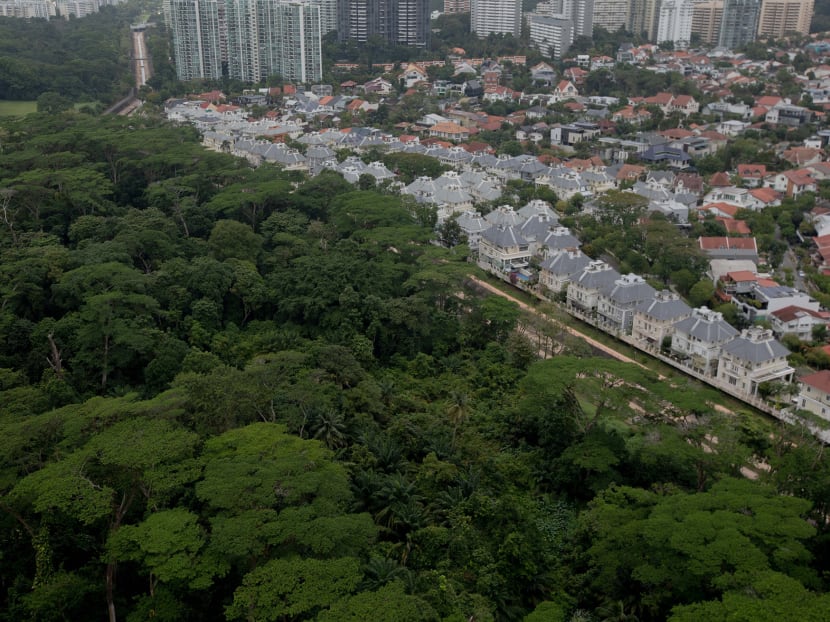HDB to extend public consultation on Dover Forest by 4 weeks: Desmond Lee
SINGAPORE — The Housing and Development Board (HDB) will extend the public consultation on the possible uses of the Dover Forest site, which ended last month, by four weeks.
- Public consultation on possible uses of the Dover Forest site ended in January 2021
- National Development Minister Desmond Lee said the period would be extended by four weeks
- The site has been earmarked for possible residential use, prompting environment groups to oppose such plans
- Mr Lee said he was "encouraged" by the interest in nature conservation
- HDB will consider all feedback and announce its plans when ready, he added
SINGAPORE — The Housing and Development Board (HDB) will extend the public consultation on the possible uses of the Dover Forest site, which ended last month, by four weeks.
Referring to the forest as Ulu Pandan given that the greenscape is within the wider estate, National Development Minister Desmond Lee said in Parliament on Monday (Feb 1) that the public housing agency will consider all the feedback received and announce its plans when ready.
The 33ha Dover Forest is zoned for residential use. It is home to at least 158 species of animals — including critically endangered ones — and 120 plant species, based on an HDB environmental study.
Ulu Pandan is one of several estates where HDB is planning to offer 17,000 Build-To-Order flats this year.
“We are encouraged by the keen interest generated in our plans for Singapore and nature conservation. Indeed, mainstreaming of nature consciousness among Singaporeans is a key part of our strategy to become a ‘city in nature’,” Mr Lee said in Parliament.
He reminded the House that Singaporeans, when having conversations on recalibrating the balance between conservation and development, need to discuss these issues in practical terms.
He referred to a TODAY article in which undergraduate Yeo Wei Jiang, 24, said that he was willing to wait longer to get a new public housing flat, live in a less convenient area and pay a higher price if Singapore could make preserving its natural environment its top priority.
Mr Lee was responding to parliamentary questions filed by various Members of Parliament regarding the Ministry of National Development's plans for both the Dover and nearby Clementi Forest, as well as the ecological impact should such areas be developed.
The Dover Forest, in particular, has been in the spotlight recently after HDB said on Dec 20, 2020 that it was seeking feedback on its environment baseline study on the Ulu Pandan estate.
In the study, it was stated that the site had been largely zoned for residential use in the 2014 Master Plan by the Urban Redevelopment Authority (URA).
This prompted nature groups to oppose developing Dover Forest for such a purpose.
Mr Lee said that HDB is still receiving feedback and suggestions from nearby residents and members of the public since the Ulu Pandan environmental baseline study was published.
Among the wide range of views, some people have proposed retaining the site for greenery and recreation and designating it as a nature park. Others suggested that new housing and nature could co-exist by developing the eastern end of the forest where vegetation is less dense.
Mr Lee said: “While there are diverse views, many who have written in appreciate the tension between the need for development and nature conservation. We are studying the feedback in detail and welcome more Singaporeans to give their views and inputs, as we consider our plans for the Ulu Pandan site.”
As for Clementi Forest, Mr Lee said that the site had been zoned for residential use, though subjected to detailed planning, 23 years ago in URA’s 1998 Master Plan.
He said that there is no immediate need to develop the site for housing, but the Government will retain the zoning of the site for now.
“This will give our future generations the option of deciding whether to use it for housing or to review its land use if the need arises.”
Mr Lee also explained the ministry’s approach to land use and redevelopment.
For greenfield sites, he said that the Government adopts a “science-based” approach to identify core biodiversity areas and its surrounding buffers. The green spaces identified and the strategies to protect them is then set out in the Nature Conservation Master Plan.
Using this approach, Singapore has safeguarded about 7,800ha of land, some of which had been used before. For example, Sungei Buloh Nature Reserve was previously used for prawn farming.
He added that the ministry plans to expand Singapore’s green spaces by another 1,000ha over the next 10 to 15 years.
However, he said that there will be greenfield sites that may have to be developed to meet other needs due to physical constraints and land scarcity.
When development of these sites is deemed necessary, Mr Lee said that an in-depth consultation with technical agencies is undertaken. An environmental study may also be done to assess the possible environmental impact of development plans.
“Unless there are security considerations, the studies will be made publicly available, so that anyone can provide feedback on the findings and recommendations,” he added.
These studies and feedback guide the planning of the site, including what sort of mitigating measures need to be taken to reduce the environmental impact caused by development.












